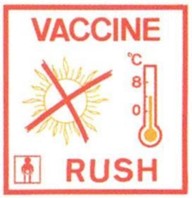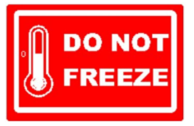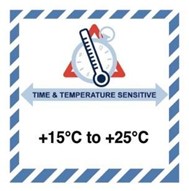Transporting Temperature-Regulated Medical Items
The transportation of medical relief items, including medical relief item that require temperature controls of various kinds, is an increasing component of modern humanitarian response activities. Agencies responding to any given emergency will be confronted with a variety of transportation decisions based upon handling needs and local regulations.
Many of the same GXP/GSP/GDP requirements for storage also apply for transportation. The transport and movement of medical items, particularly drugs, needs to be carried out in such a way as to prevent deterioration of the quality of the items, and in a way to also to prevent the infiltration of counterfeit and substandard items into the supply chain or the theft of valuable items. Key considerations include:
- The specific requirements for temperature-regulated medicines.
- Ideally transport containers of medical items, particularly drugs and medical devices, should not be used for other goods (especially food and fuel). Where not possible, they must be packed separately and clearly marked as medical items and should be protected from other items (e.g. items using a tarpaulin).
- The quality of medical items can be significantly affected during their loading and unloading during transport.
- The fragile nature of many medical items requires dedicated attention and oversight in loading and off-loading, as well as transport method selection.
- Sufficient security measures for controlled substances should be put in place.
- Documents should be maintained with the goods containing expiration dates, countries of origin, or other information as required by local authorities.
It is important to keep in mind that some countries have requirements for certification to transport medicines domestically (GDP certification) as well as strict requirements for the transportation of narcotics.
Depending on the external ambient temperature, stability of the product and length of the journey, temperature-controlled transport solutions may be required for the majority of medical items - including those requiring +15°C to +25°C storage ranges.
Evaluating the Journey
To evaluate the journey, some of the criteria to be consider are:
- The transport modes and vehicle types.
- The journey distances and its expected duration.
- The environmental conditions: temperature (day–night and seasonal temperature extremes) and geographical and natural hazards.
There are 3 basic transportation stages in the supply chain of temperature-controlled medical items:
- From the manufacturer to a primary or central store: usually international shipments.
- Between (intermediary) stores: normally between national or district store facilities and down to the health care facility.
- Outreach transportation: final keep cool item delivery during regular EPI or to a vaccination site during a mass vaccination campaign.
Evaluating the entire journey can reveal gaps, such as lack of temperature-controlled storage at customs, or excessive lead times to delivery cargo items down-stream. It is strongly advisable for humanitarian organisations to consider the entire journey when shipping medical relief items, especially those with time sensitive and temperature-control requirements.
Aerial or terrestrial modes are preferred for transportation of items that are time sensitive, or carried in passive cold chain containers. Air transport is usually chosen for international or long-distance shipments. In most humanitarian contexts, terrestrial land transport is usually for transport of items carried in passive keep cool container within the same country, unless refrigerated trucks are readily available in the context. Outreach is often done by any land transport mode: car, motorcycle, bicycle. Because of the long duration of the journeys, passive keep cool containers are rarely transported through waterborne means.
Enacting Shipments of Temperature-Controlled Medical Items
Shipment Documentation
Having the proper documentation in time is critical for any shipment of time sensitive temperature-controlled medical items as any delay might expose the items to inappropriate temperature conditions, especially through cross-border supply chains. In the event of international shipments, the shipper must provide the cargo details with sufficient time in advance to allow the consignee to prepare for the reception. In addition to the commonly accepted standard set of shipping documents and documents associated with importation, shippers should review all required shipping documents prior to shipping with relevant customs broker and health authorities. Ideally, all documents and information should include:
- Date and time for place of departure, transit (if applicable), and arrival.
- Any temperature requirements.
- Type of item, total number of primary containers/vials and number of doses per primary container/vials.
One set of the original documents above must also be placed inside the parcel numbered “1”. This particular parcel should be clearly labelled with the words "Containing shipping documentation".
Any time temperature-controlled medical items are to be transported using commercial carriers, humanitarian organisations will still need to specify and declare key information up front. This will include.
- Maximum and minimum temperature ranges.
- (If required) Supplying safety data sheets (SDS) for live vaccines, chemical coolant packs, or anything else that might qualify as dangerous goods.
- Sufficient security measures for controlled substances.
- Documents containing expiration dates, countries of origin, or other information as required by local authorities.
For shipping vaccines – Additional documentation may be required, including:
- Lot Release Certificate issued by the national regulatory authority (NRA) of the country of manufacture for each lot of items in the shipment, together with the Certificate of Pharmaceutical Product (also by the NRA).
- Lot Summary Protocol of production and quality control.
A list of contact points for national regulatory authorities in countries producing vaccines pre-qualified for purchase by United Nations agencies can be found in WHO Guidelines on the international packaging and shipping of vaccines.
Air Shipments
Temperature sensitive shipments must be booked to the air company under the proper handling code and as “temperature-controlled health-care cargo”, as this is an exceptional service beyond that offered for general cargo.
Road Shipments
For road shipments, it is critical to coordinate the delivery with the consignee before dispatch and confirm pick-up time and location.
To reduce as much as possible the temperature-controlled medical items are outside active devices and to exploit cold life of any used passive containers, prepare and pack products in its designated packaging the same shipping day.
If using a third-party logistics provider, make sure that they are prequalified and approved for freight forwarding/transport.
If time sensitive temperature-controlled medical items through a third-party transporter:
- Ensure the transporter knows the exact limits on time for deliver.
- Include clear instruction on handling requirements of keep cool boxes/items.
If a humanitarian organization is organising the shipment by own means, it is best practice ensure that the designated vehicle is in good working condition and that the driver is aware of the cargo sensitiveness. Provide the driver with clear instructions and the necessary means to ensure proper load, handling and transport. This should include:
- Using refrigerated vehicles where possible. If refrigerated vehicles are not available, place temperature sensitive items in shaded areas.
- Fragile boxes/containers should be secured.
- Use of shaded and secure parking areas, minimising the time during which the vehicle is unattended.
- Avoid opening the refrigerated vehicle or keep cool containers during transit.
- Emergency contact information to call in case of breakdown or unexpected events.
The arrival of a temperature-controlled medical items in a country, and their subsequent clearance through customs and transportation to a central store are the most critical stages in the shipping process. These are frequently the times when mistakes and delays occur, resulting in damage ore loss of items.
Receiving Temperature-Controlled Medical Items
Reception at Customs
Clearing of any items through custom should follow the normal procedures of that country, however there are few extra things logistics personnel should consider temperature-controlled medical items.
The first step in the customs clearance process, is contacting the following entities to obtain or verify the import procedures:
- National regulatory authorities (NRA) or head of customs in the destination country. To be cleared, the imported items must have received marketing authorisation and a release certificate from the national regulatory authority.
- Local Ministry of Health (MOH): depending on country specific requirements, the MOH may issue a letter approving the shipment.
As reference, the general steps are:
- Submission of shipping documents (as soon as they are received) with a request to customs authority for the provisional clearance of shipment to the nominated Clearing and Forwarding agent.
- The clearing and forwarding agent immediately processes the shipping documents as per established rules and regulations of government and contacts customs and airlines to coordinate the arrival, transport, checking and safe storage of the items.
- Continuous contact is maintained well in advance with the concerned airlines to get accurate and updated information of the flight arrivals of the shipments.
- Once the flight/vehicle arrives, immediate action is taken to release and take delivery of the keep cool shipment and to safely transport the items to the temperature regulated storage locations.
- The clearing and forwarding agent checks the cold-chain monitor(s) and other mechanism (if necessary) to identify and reconfirm that the temperature-sensitive items arrived in good condition before removing the shipment from the airport.
- Irrespective of the condition of the temperature-sensitive items at the time of clearance, the clearing and forwarding agent clears the items and delivers as per regular procedures.
- The clearing and forwarding agent informs the concerned official(s) in a timely manner and arranges for the cold room and the required staff to be ready and available to receive/store the keep cool items.
- There should be a system in place to arrange to open the cold room and liaise/contact with the storekeeper/cold room staff at any time (24-hours/day, including weekends and holidays).
- Under no circumstances can any temperature-sensitive item be left unattended, or outside of the cold room in an open space.
- Unannounced shipments are cleared in time, like all other shipments.
- A reliable transport system including a refrigerated/insulated van should be made available at all times for effective transportation and delivery of the keep cool items.
In special instances where regular customs procedures may not be in place – such as extraordinary emergency conditions or use of military aircraft - humanitarian organisations may have to be prepared to receive keep cool shipments under their own volition. This includes having the adequate vehicles waiting at the point of reception and providing the receiving party with all anticipated times of arrival and handling instructions.
Importing temperature-controlled medical items through ports that don’t have the adequate cold storage facility is not recommended. In the event of receiving a shipment of needing clearance in a port without cold storage facility or if the cold room is inaccessible, arrangements should be done for immediate release of the shipment. Coordination with the relevant authorities for an agile clearance and/or for safe and appropriate management and storage of emperature-controlled medical items at the airport are therefore needed.
Reception at the Storage Facility
Any reception facility receiving medical items that have temperature control requirements, other other specialty handling needs should have the capacity to receive and adequately store medical items in the proper way. Prior to shipping any medical items, humanitarian organisations should evaluate if storage facilities can safely receive and store those medical items.
Ensure priority unloading of all shipments of temperature-controlled medical items. If multiple vehicles arrive at the same time, prioritize unloading the most time sensitive items, or the items that have the shortest capacity for transport (items contained in passive cold chain containers)
Move the product immediately to the appropriate place in the storage facility. Open packaging, retrieve and inspect the temperature monitors, remove product from its passive shipping container and move it immediately to the correct temperature-controlled storage conditions.
If the temperature monitor shows a change that indicates potential deviation, take a picture, photocopy or scan that show alarm status. This information should be used to make decisions on whether to accept the product, or whether to quarantine it until an investigation has taken place and a final disposition has been made.
If using dataloggers or tags that record time and temperature data that can be downloaded, retrieve and store time and temperature data. The point in time when a temperature excursion has occurred is important for the purchasing agency and/or the manufacturer so they can identify the cause of the excursion, take corrective measures, avoid similar situations in future shipments, and for insurance purposes.
Clearly identify temperature-controlled medical times in boxes in which the indicator shows exposure to temperatures that risk damage and keep them at the required temperature for further assessment of their condition. Do not discard potentially damaged items until a full assessment is completed.
Verify that all necessary documents are present. In the case of vaccines, do not use the vaccines if the lot release certificate is missing. In that case, keep vaccines on hold in cold storage until the relevant document has been obtained from the vaccine manufacturer.
Report any relevant information to the carrier and to the appropriate personnel in your organisation. In case of loose or damage, review insurance policy clauses and follow the insurance claim instructions.
Labelling Containers of Medical Items
Containers carrying temperature regulated medical items should be properly labelled with the handling and temperature requirements on the side. Specific requirements exist for the labelling of international/air shipments. Therefore, a distinction must be made between international/air and domestic shipping.
International/Air Shipments
For international/air shipments, a label must be affixed to the front surface of each package indicating type of item, name of manufacturer, presentation, batch number, date of manufacture, date of expiry, quantity, and storage conditions. The manufacture date and expiry date on all labels should be written in full, not in a coded form (i.e. June 2017, not 06.17). In addition, required temperature conditions for transportation must be clearly visible on the outer carton, indicating clearly where recommended transportation temperatures differ from recommended storage temperatures.
|
Labels must be written in a language appropriate to the country of destination.
Domestic/Road Shipments
There is no specific international regulation for labelling medical shipments transported by road. Nevertheless, becoming knowledgeable in the laws of all of the countries in your distribution channel can help to avoid administrative burden and delivery delays.
In any case it is recommended that shipper and consignee agree on a basic standard operational procedure to pack, label and receive temperature-controlled medical shipments. Among other topics, the procedure should establish the warning signs about time and temperature sensitiveness of the parcels, and shipping labels should indicate temperature requirements on the outside.




